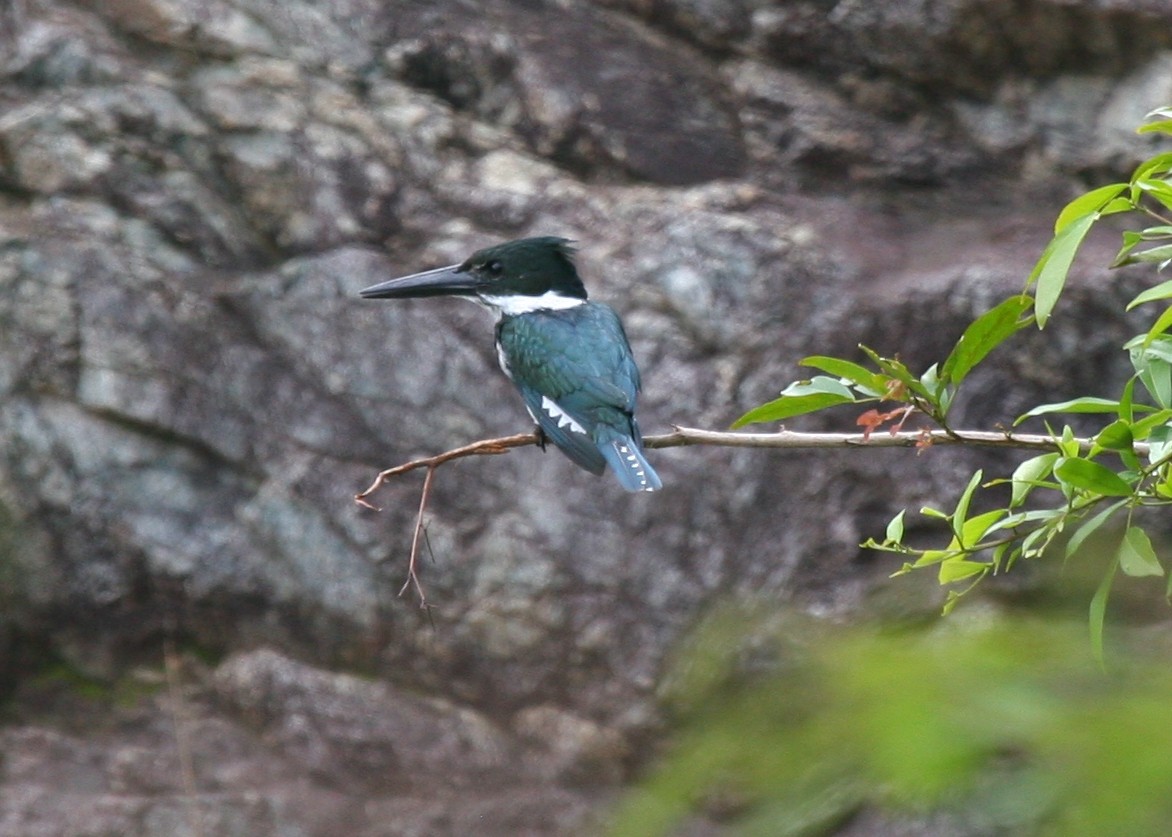Amazon Kingfisher
A species of American Green Kingfishers Scientific name : Chloroceryle amazona Genus : American Green Kingfishers
Amazon Kingfisher, A species of American Green Kingfishers
Botanical name: Chloroceryle amazona
Genus: American Green Kingfishers
Content
Description General Info
 Photo By Dominic Sherony , used under CC-BY-SA-2.0 /Cropped and compressed from original
Photo By Dominic Sherony , used under CC-BY-SA-2.0 /Cropped and compressed from original Description
The Amazon kingfisher resembles the green kingfisher which shares its range, but it is much larger than its relative, and three to four times as heavy. It is 30 cm (12 in) in length and weighs 98–140 g (3.5–4.9 oz). It has the typical kingfisher shape, with a short tail and long bill. It is oily green above, with a shaggy crest and a white collar around the neck. It lacks the white markings on the wings shown by green kingfisher. Males have white underparts apart from a broad chestnut breast band and some green streaks on the flanks. Females have white underparts with green patches on the side of the chest and green flank streaks. Young birds resemble the adult female, but have white spots on the wings. These birds often give a harsh teck call. The rarely heard song, given from a tree top, is a whistled see see see see. 
Size
30 cm
Nest Placement
Cavity
Feeding Habits
Amazon Kingfisher primarily consumes fish and crustaceans, diving from perches to snatch prey with sharp precision. Specialized hunting adaptations allow effective capture of aquatic diet.
Habitat
Amazon Kingfisher are typically found in a variety of aquatic environments such as large slow-flowing and fast-flowing rivers, including those with rapids and deep pools. They frequent lake shores, wooded lagoons, and occasionally venture into brackish lagoons and winding mangrove channels. These birds are most commonly observed in open habitats, particularly along open shorelines. While their presence is predominantly below 1200 meters in elevation, they can be found as high as 2500 meters in certain regions like Venezuela. Coastal tidal estuaries also form part of their habitat range.
Dite type
Piscivorous
General Info
Feeding Habits
Bird food type
Behavior
This large kingfisher breeds by streams. The unlined nest is in a horizontal tunnel made in a river bank, and up to 1.6 m long and 10 cm wide. The female lays three, sometimes four, white eggs. Amazon kingfishers are often seen perched on a branch or rock close to water before plunging in head first after their fish prey. They also feed on insects, fish and amphibians. They are the most likely American green kingfisher to be seen on large rivers. 
Species Status
Not globally threatened.